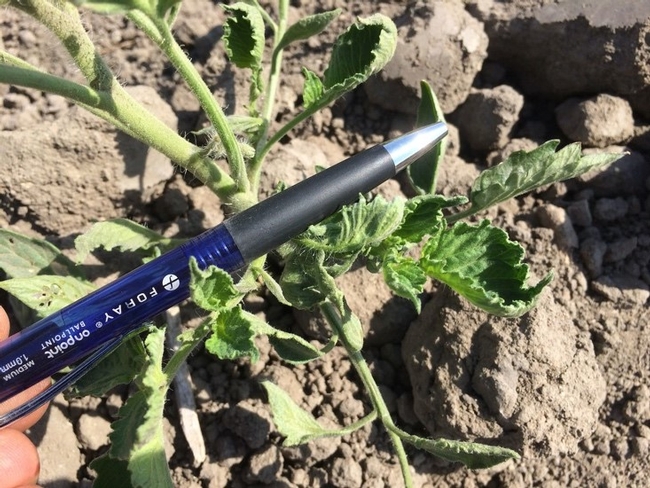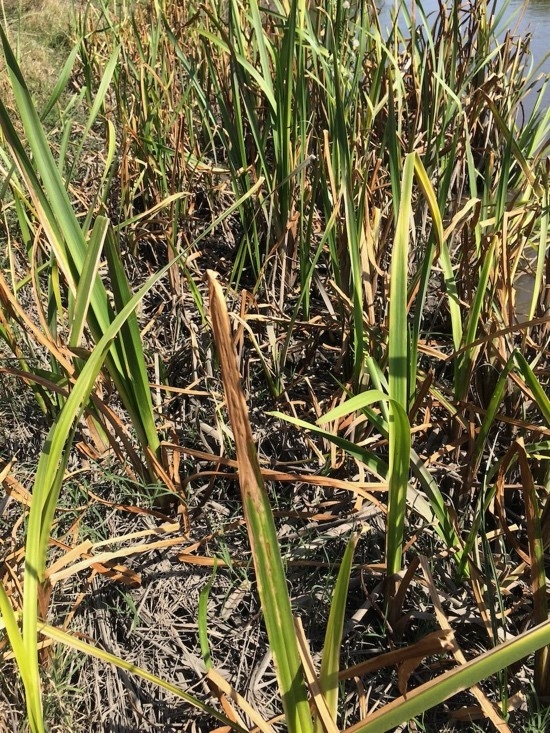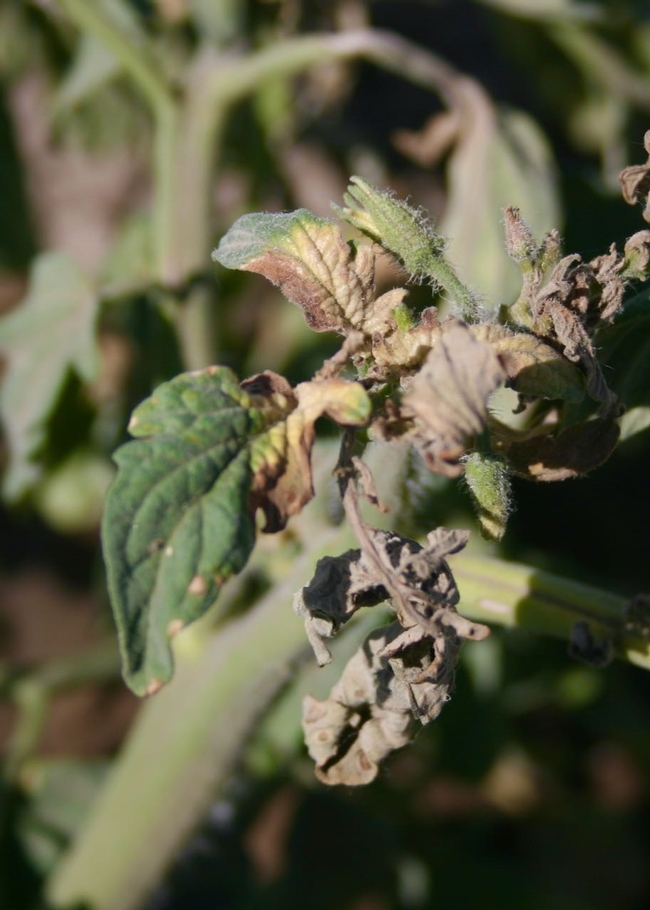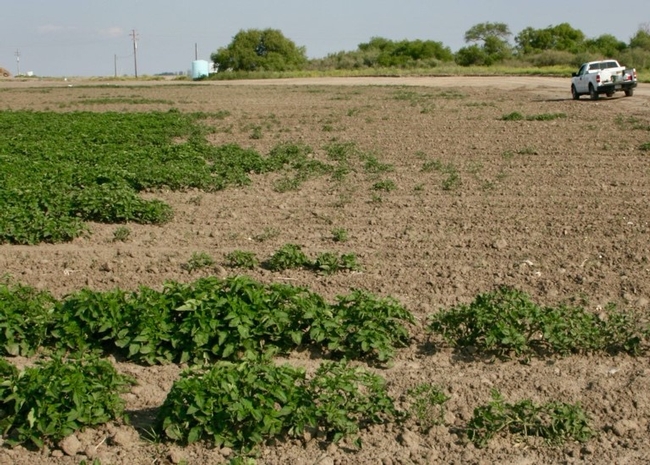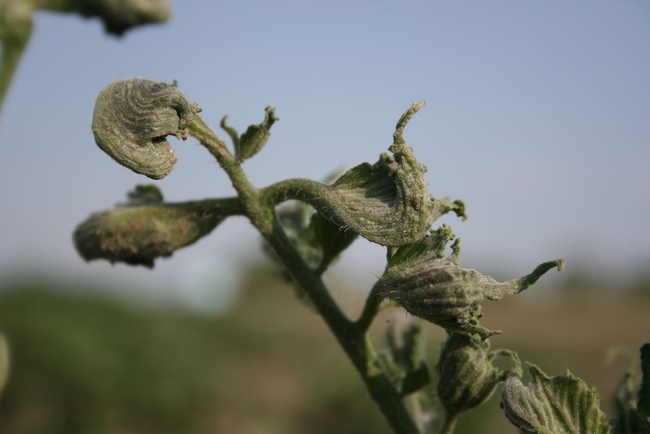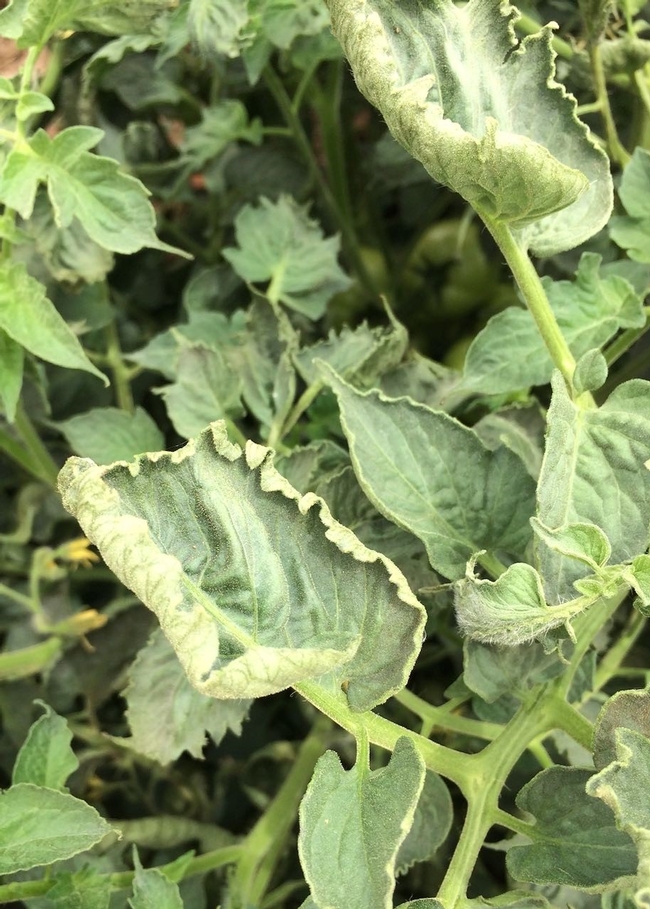Figure 1. New tomato transplants with cupping symptoms on leaves.
Figure 2. Cattails with glyphosate symptoms in nearby drainage ditch.
Figure 3. Glyphosate drift symptoms on tomato leaves typically shows chlorosis beginning at the base of the leaflets.
I left the field with the issue unresolved, but I did suggest that everyone double check their spray logs just to be sure. I thought there was a chance that some left over 2,4-D from a February or March application to wheat was still sloshing around in the spray tank, and that same sprayer had been used to clean up the side of the drainage ditch. But on a hunch, I also grabbed some soil to do a bioassay with some tomato transplants I happened to have. Perhaps I could duplicate the symptoms.
In 2014, veteran farm advisor Richard Smith in Monterey County made a report in this UC Weed Blog about tomato plants from small growers and gardeners with deformed leaves similar as to what occurred in this field (Herbicide Carry-Over in Compost? https://ucanr.edu/blogs/blogcore/postdetail.cfm?postnum=14175 ). Based on a bioassay, his conclusion was likely contamination of compost made with municipal yard waste that contained clopyralid that had been applied to turf. Clopyralid has both crop and non-crop uses in agriculture, and goes by the tradename Stinger and Transline. Another product with a similar mode of action and slow degradation half-life is Milestone (aminopyralid).
As it turned out, I didn't need to do the assay. The grower decided to do his own bioassay on a much larger scale: he replanted a large portion of the field. In two weeks, all the plants had exactly the same symptoms as before (Figure 5).
Figure 4. The distance between healthy and impacted plants was very abrupt.
Both clopyralid and aminopyralid are labeled for use in California for non-crop areas, including barrow ditches and roadsides, for both pre- and post-emergent weed control. Both also have 18-month plantback restrictions for many crops, including tomatoes. These are very strong herbicides that offer extended weed control, but can harm sensitive crops even if inadvertently moved onto land by runoff, wind, or farm machinery.
Figure 5. Leaf twisting and curling were just as prevalent in the 2nd planting.
Figure 6. Mature fresh market tomatoes with symptoms of growth regulator herbicide.
Scott Stoddard is a UC Cooperative Extension Vegetable Crops and Soil Farm Advisor in Merced and Madera counties.
